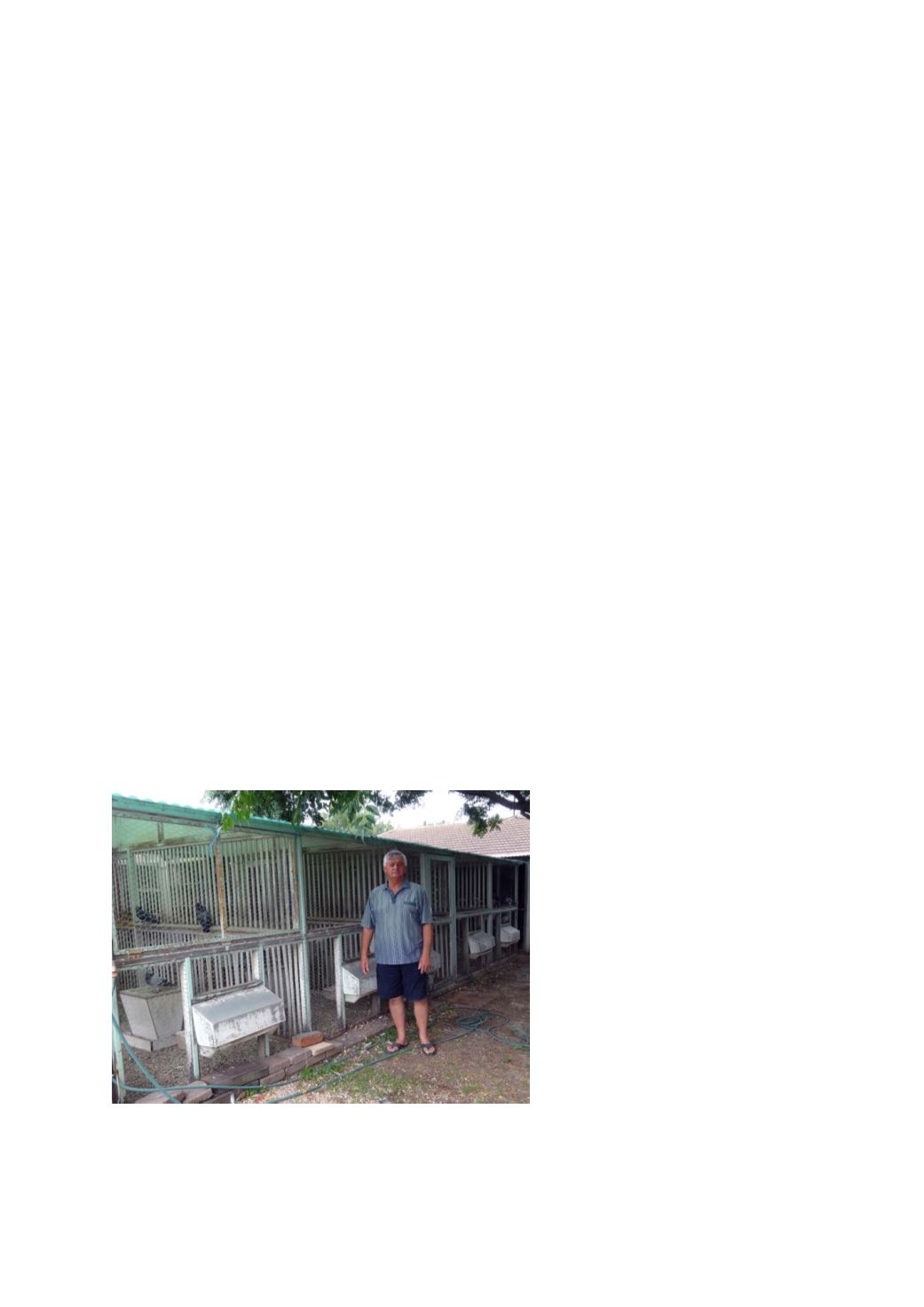

SAHPA 2016 Year Book Page 23
To all flyers - we all have good pigeons but it is how you manage them that makes the
difference between winning and losing – so don’t always blame the birds - just look in the
mirror sometimes. To the new flyer - just try and enjoy the pigeons and the sport.
On drug testing I think they are testing the wrong pigeons.
The Pigeons
I like a well balanced pigeon with tight vents with no drop between the keel and vent.
We all think we can see breeding potential in birds but the stock house is the only way to find
out ie, breed and race the progeny.
I pick a pigeon in form based on its work rate around the loft and how they react in the loft -
on the go all the time. They will have bright eyes, their colour is clean - black is black and
white is white - clean and warm feet, pink throat, feathers are tight and belly is clean.
I value a bird that has won with a slow velocity on the south-east line. I do introduce new
birds. The imported birds can compete in the longer races and I am always looking to
improve. I don’t think I have paid big money for a pigeon. I think I have been lucky in the
sport. I have swapped birds and been given good birds and paid little. An outcross would be
introduced to get new bloodlines in the loft and I would go to a top flyer with the right
bloodlines. I keep plenty of stock birds and pairing up is based on pedigree and performance.
I don’t discard them on age – if they are good, they are always good. This year I have put
birds straight to stock without racing. Pairing up is done on the first week-end of November. I
will probably breed 200 in a given year.
The Loft
It is 8 metres long and has four compartments and a corridor. I have 280 available perches.
The drinkers are on the outside and it is made out of timber with chipboard floor. The loft is
cleaned daily.
Feeding and Medications
I feed peas (approx. 45 pc), wheat (approx. 45 pc), safflower and maize (around 10 pc). No
barley. Feed is mixed by me. They are always fed by hand. The birds are treated with
Turbosole every Monday and are wormed prior and during the season. Grit and minerals are
available but not small seed. Epsom salts are used once a month. I use honey on race days.
No medications are used on returning from a race. I used to consider the carbohydrate but not
now.
Training and Racing
I will start with 30 old birds and
approx 200 that I have bred.
Training starts after the birds are
ranging for about one month. I like
them to be doing an hour and a half
around the loft. My birds are
exercised once a day in the
afternoon. They get three Dublins
and then Pt. Wakefield. No further
at all. I personally don’t single up
train or educate them in the basket.
I plan carefully only for some
SAHPA races but I’m always
trying to improve. Birds are raced
once a month. I like a race with a
head wind - races of 600 to 700 km – on the day – are my preference. The wind and loft
position does have an influence up to 500 km.
















